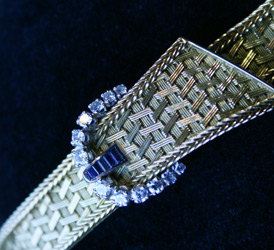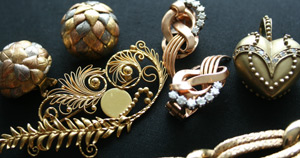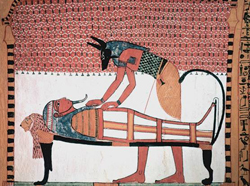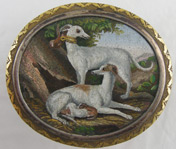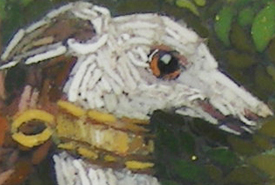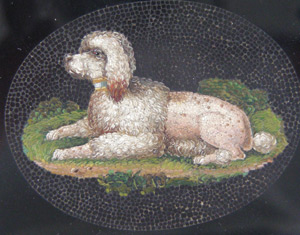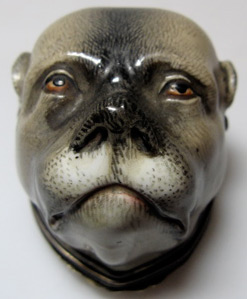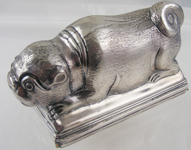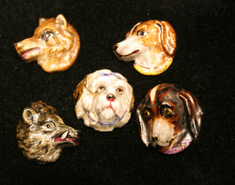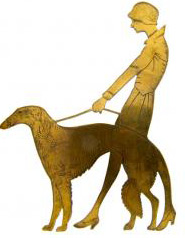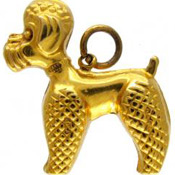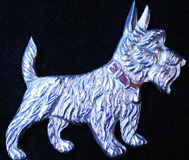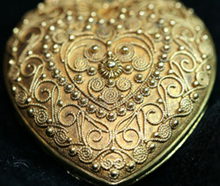 Pure gold is not much harder than talc. (Talc is 1 on the Moh’s scale of hardness, diamond is 10), pure gold is between 2 to 3 which makes gold incredibly flexible to work with. One Troy ounce (31.1 ounces) can be beaten very thinly to cover 4 square metres. These sheets or gold leaf were used to gild artefacts, frescos, the halos of saints, and even to decorate cakes. The ounce of gold could also be pulled into a wire 100km long. As well as the beautiful wire work in jewellery, the gold wire provided the earliest use of gold in dentistry when the Etruscans started securing their false teeth with gold wire in 600BC
Pure gold is not much harder than talc. (Talc is 1 on the Moh’s scale of hardness, diamond is 10), pure gold is between 2 to 3 which makes gold incredibly flexible to work with. One Troy ounce (31.1 ounces) can be beaten very thinly to cover 4 square metres. These sheets or gold leaf were used to gild artefacts, frescos, the halos of saints, and even to decorate cakes. The ounce of gold could also be pulled into a wire 100km long. As well as the beautiful wire work in jewellery, the gold wire provided the earliest use of gold in dentistry when the Etruscans started securing their false teeth with gold wire in 600BC
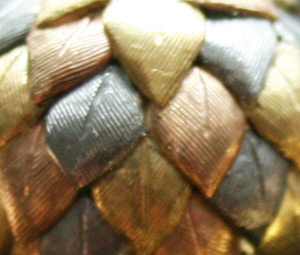 Gold has been found all over the world and nearly all civilisations have been enthralled by it and gone to great lengths to obtain it. Only a few cultures, such as the Aborigines, the Maoris and the indigenous peoples of North America haven’t succumbed to its magic, valuing more, harder materials such as flint or obsidian (volcanic glass). However, one of the great qualities of gold is that it can be mixed easily with other metals such as copper, silver, zinc and palladium to make it harder – a by product to this process is that wonderful varieties of colours can be created which have been used so effectively by jewellers. 24 carat (ct.) gold is 99.9% gold, and is very yellow.18ct gold is 75% yellow gold and 25% other metals. 18ct green gold has the 75% gold with 25% silver. To get 18ct red gold the 25% addition is copper. 18ct white gold has the 25% addition of silver, zinc and palladium to give a white hue. In the past
Gold has been found all over the world and nearly all civilisations have been enthralled by it and gone to great lengths to obtain it. Only a few cultures, such as the Aborigines, the Maoris and the indigenous peoples of North America haven’t succumbed to its magic, valuing more, harder materials such as flint or obsidian (volcanic glass). However, one of the great qualities of gold is that it can be mixed easily with other metals such as copper, silver, zinc and palladium to make it harder – a by product to this process is that wonderful varieties of colours can be created which have been used so effectively by jewellers. 24 carat (ct.) gold is 99.9% gold, and is very yellow.18ct gold is 75% yellow gold and 25% other metals. 18ct green gold has the 75% gold with 25% silver. To get 18ct red gold the 25% addition is copper. 18ct white gold has the 25% addition of silver, zinc and palladium to give a white hue. In the past
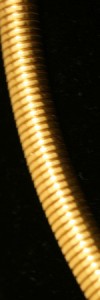
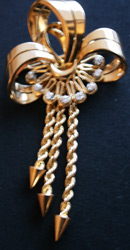 nickel was in the 25% mix but nickel can cause an allergic reaction so is rarely used now. In 1854 lower carat gold was permitted so that gold could be made available to more people. These other carats were 12ct gold, 50% gold and 50% other metals, 15ct gold, which was 62.5% gold and 37.5% other metals and 9ct gold which at only 37.5% gold and 62.5% other metals could hardly be called gold. However, in 1931,12 and 15 carat gold were replaced by 14ct gold, 58.3% gold 41.7% other metals. We have kept the 9ct gold.The colour of the gold mixes will
nickel was in the 25% mix but nickel can cause an allergic reaction so is rarely used now. In 1854 lower carat gold was permitted so that gold could be made available to more people. These other carats were 12ct gold, 50% gold and 50% other metals, 15ct gold, which was 62.5% gold and 37.5% other metals and 9ct gold which at only 37.5% gold and 62.5% other metals could hardly be called gold. However, in 1931,12 and 15 carat gold were replaced by 14ct gold, 58.3% gold 41.7% other metals. We have kept the 9ct gold.The colour of the gold mixes will
also be different depending on the carat of gold and the percentage of other metals. So for example, 18ct red gold will be a softer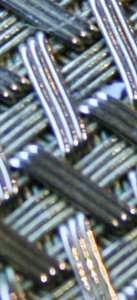
rose colour than 9ct red gold which will obviously have a much greater proportion of copper so will be a richer darker red.
Gold is liked so much for its value and the status it can give to the wearer. But there is much more to gold.

